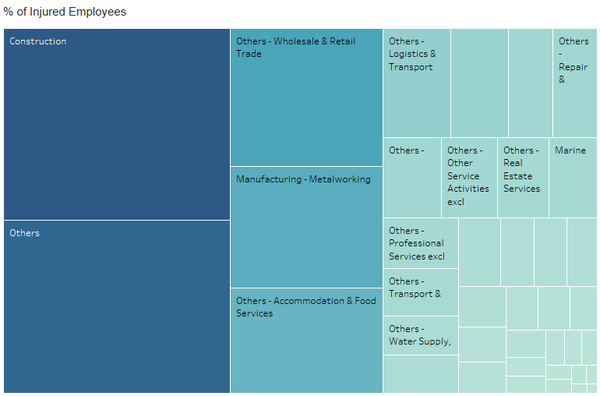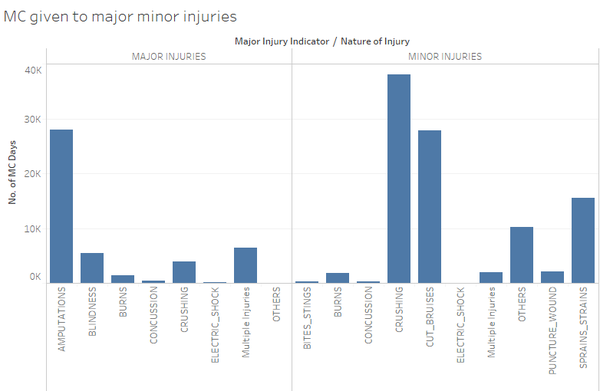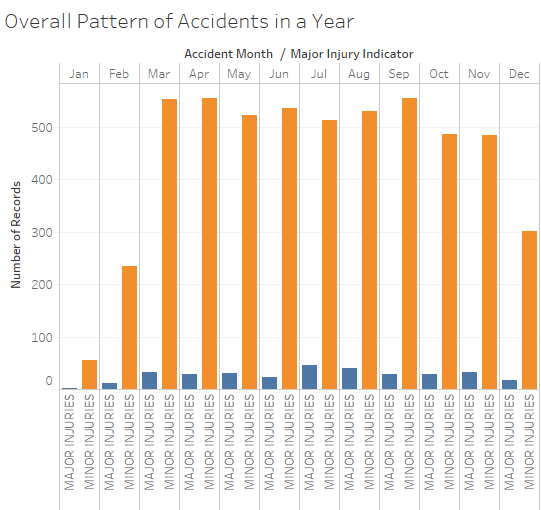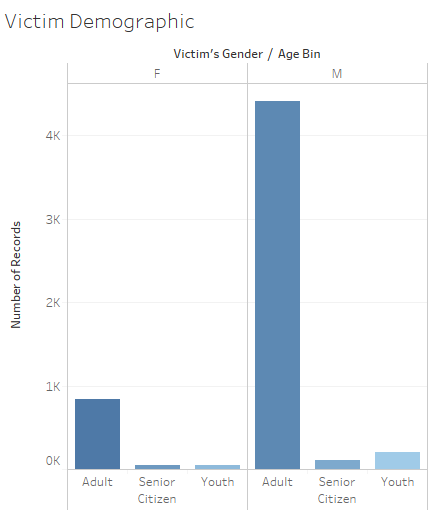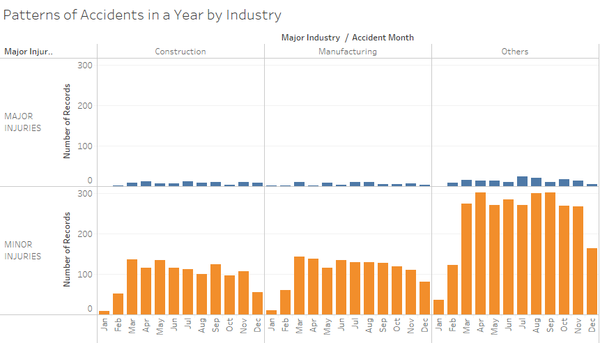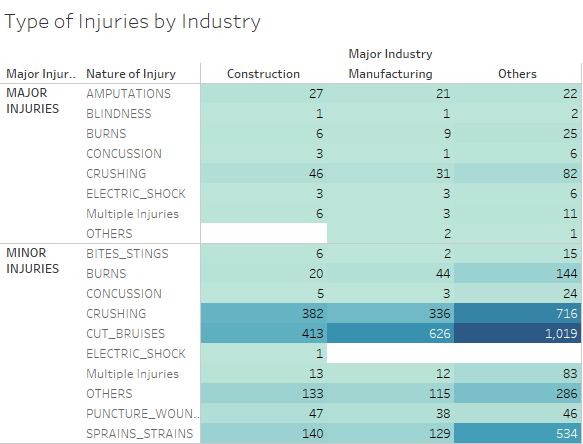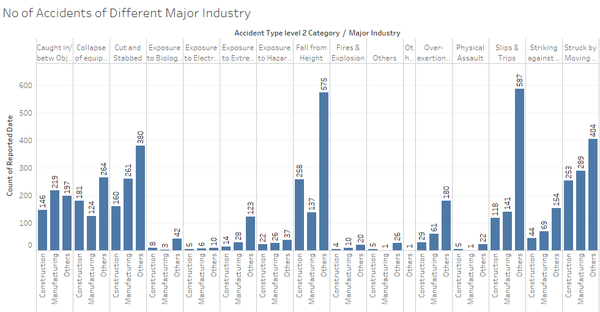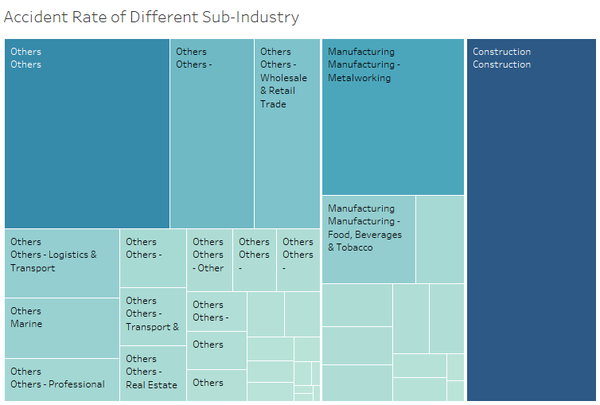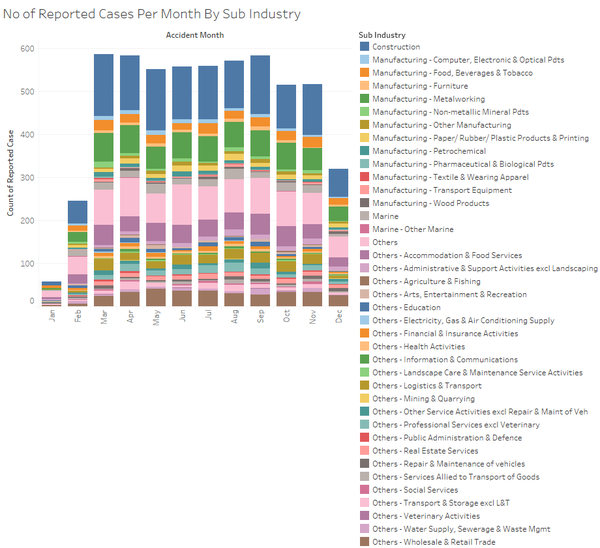IS428 2016-17 Term1 Assign2 Li Weiqiao
Contents
Abstract
Safety should be a priority for everyone in the workplace. According to the WSHI report in 2014, overall number of report injuries increased compared to 2013.
Accessing the data set from Workplace Safety and Health Institution, this report is going to dive into several parts to study about injury frequent rate by time and industry category and factors that affect injury rate which to provide a better understanding about workplace safety. Measures can be effectively brought out to protect working people from accidents and injuries.
Theme of Interest
Questions for Investigation:
• Which industry has the highest rate of workplace injuries?
• Which body parts got injured most of the time?
• Which gender suffered more injuries and particularly in which industry?
• Who is more prone to injuries? Is it the younger or older ones?
• How did they get injured?
• Who gets injured most of the time?
• When do accidents occur the most? (Which month and why? Does it occur more frequently during overtime?)
• What is the distribution of the number of MC given to injured employees?
Identifying appropriate attributes
The following data attributes are selected for analysis:
- Reported Date
- Reported Month
- Informant's No Of Employees
- Accident Month
- Major Industry
- Sub Industry
- Body Parts Injured
- Nature of Injury
- Major Injury Indicator
- Accident Type Category
- Victim's Age
- Cause
- Victim's Gender
Blog
Data Transformation, Preparation & Cleaning
To get things started, I examined and analysed the raw data ("WPI_data") to understand the dataset and attributes given to me. I also noticed that some data are either improper or irrelevant. For example, there were some spelling mistakes. As a data analyst, I needed to ensure that I have done proper data cleaning before doing analytics so that my analysis is true and accurate. I used Microsoft Excel 2016 and JMP to clean and transform my data. Then, I used Tableau to do my visualization.
1. Industry with the Highest Rate of Injuries
I created a new attribute called "% of Injured Employees" by taking the sum of records divided by the total number of workers of the informants.
I used a treemap as it allows the user to have a bird's eye view of the injury rates of the different industries.
2. MC given to Minor and Major Injuries
You can see that for major injuries, blindness was given the most number of MC, followed by amputations then multiple injuries. However, my findings is that not enough MC days have been given to amputations and multiple injuries.
3. Overall Pattern of Accidents in a Year
You can see that for the months of January and February, not a lot of accidents have occurred. The peak was during March, April and September. I reckon that especially at those months, perhaps precaution has been lax or either there are more construction happening during those months.
4. Victim Demographic
Males tend to get injured more often than females. Statistics have shown that males predominantly work in the labor intensive e.g. construction industry.
5. Pattern of Accidents in a Year by Industry
6. Type of Injuries by Industry
7. Number of Accidents of Different Major Industry
8. Accident Rate of Different Sub Industry.png
9. No of Reported Cases Per Month By Sub Industry
Findings & Recommendations
1. Adults got injured the most.
2. Construction has the highest rate of workplace injuries. Perhaps more precaution and safety measures should be put in place for this industry. After all, it is one of the most dangerous industries.
3. Hand and lower leg ankle foot got injured the most. After all, we use our hands to do work and since our lower leg ankle foot tends to be exposed more often so employers should consider imposing covered shoes or insure those body parts more.
4. Males suffered more injuries as compared to the females especially in the construction industry.
Visualization
https://public.tableau.com/views/VAAssignment2DinaHengLiGwek/Dashboard3?:embed=y&:display_count=yes
Tools Utilized
- Excel 2013 for data preparation
- Tableau for visualization
